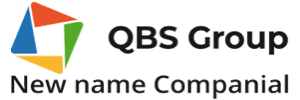Interview with Nico Straub, founder of NAS Conception GmbH, Düsseldorf, Germany.
Founded in 2012, NAS Conception serves the hotel business, real estate developers and NGOs, and have since the introduction of Dynamics 365 been embracing the digital transformation – to the extent that their business today has a split of 75% cloud-based revenue, with the expectation to increase this to 90% in a year’s time. Read on for more details on how they achieved this impressive status.
 Nico Straub started his career in the hotel business but found his way into the IT business via various positions in the Dynamics world – starting out with a position with Micros-Fidelio – the market leader within hotel IT solutions – then working for tier B NAV partner, and most recently as the IT Manager with a company using NAV. All in all, 15 years of NAV experience.
Nico Straub started his career in the hotel business but found his way into the IT business via various positions in the Dynamics world – starting out with a position with Micros-Fidelio – the market leader within hotel IT solutions – then working for tier B NAV partner, and most recently as the IT Manager with a company using NAV. All in all, 15 years of NAV experience.
“NAS Conception is a relatively small partner (11 employees) from Düsseldorf with a long history with Dynamics NAV. Historically we, the people behind NAV, have been creating NAV projects “the old way” – but when we started establishing our own business we realized that we had to re-think this habit of ours to force every single function into the ERP product – which didn’t any longer seem to be the right approach. So, we had a look around to find out what our options were and fortunately and very timely Microsoft launched all the right tools for us to make it possible to start looking at customer project with that customer perspective and not just from an ERP perspective anymore. When we evaluate a customer solution, we are looking at whether the customer requirements can be met with more or less standard Dynamics ERP functionality – or if we have to add other products. Not going into the “bend and twist” mode of the ERP to suit every possible need.
Actually, we don’t consider ourselves an ERP partner – but rather a Dynamics 365 partner – always looking at the individual need of the specific customer and then bringing along the tools from the Microsoft stack that are needed”
Question: What would you call out as your main driver of success?
“I would say that it’s our ability to deliver exactly what the market is demanding right now. I don’t think we’re any revolutionary company – disrupting the entire IT industry or something like that – but more the simple fact that when customers consult us – they always get a true customer-oriented solution.
As an example, we had a call from a customer who wanted us to do a 1:1 transition from their existing NAV 2009 into Business Central on-prem. That was the entry point – but when we left the customer we had sold him Dynamics 365 Business Central, Dynamics 365 for Marketing and Dynamics 365 for Sales – as an entire solution where all the modules integrate and using the Common Data Service as the “data pool” for pulling out all the relevant data and information to create all the necessary reports. And all as a SaaS solution mind you!
That’s a good example of how we go about consulting our customers – finding the best possible solution that supports the customer’s processes in total and not only as an ERP product which is forced to also serve as a CRM product, a marketing tool, a reporting engine etc. Our job is to make different products talk to each other. I mean – the Microsoft stack offers such a vast array of functionalities – why go and invent the same things all over again? “
Question: How do you cope with all the different products in the Microsoft stack? Do you have people with skills on all products?
“We have in-house specialists on Dynamics 365 Business Central of course – and then on all the Dynamics 365 Customer Engagement features – except for Customer Service as we don’t have customers on this.
Right now, everybody is talking about digitalization and that everybody HAVE to go to the cloud. We don’t tell customers that they HAVE to move to the cloud, but rather let the facts speak for themselves. I mean – there are very very good reasons for choosing a cloud solution. In our case, we deal with a lot of start-up companies and as a start-up, you don’t have the liquidity to just go and spend 100K on licenses, another 300k on services and 50K on hardware – you just don’t. With cloud, you can offer a start-up with a relatively small budget a quite advanced solution, so that they from day 1 can start reaping the productivity benefits that the technology offers. Our smallest customer is a 2-user company – and with a 2.500 upfront investment and a monthly fixed cost around 130 EUR they were off to a great start after only 2 days of work! This is an entirely new business segment for us, as we never targeted businesses of this size before. A 2-user solution with NAV would have been starting at 10K just in license fee – so it was simply not an attractive market for us.”
Question: where do you get your customers from? Do they find you or you them?
“We get quite a few leads from the QBS Take the Lead program and we also invest in online marketing, so we do also see a steady flow of customers contacting us directly. Sales cycles have decreased dramatically from up to 12 months in the past to now about 1-7 days. As said, this is a totally different kind of business. You don’t work on RFPs, POCs and quotes for days and weeks – we call the lead – we send out the offer for the package – that’s the deal – and customer can then take it or leave it. The customer then either signs or not – if they don’t, we move on and don’t spend more sales time on it, if they do sign, we move in, do the implementation according to package, go live, and then move customer over to our support department. Since October we have closed about 12 customers this way – and it’s steadily progressing with more leads along the way.”
Question: how do you make sure that customers are properly trained to take advantage of the solution?
“Our packages always include a standard training. Usually, our customers tend to be in a growing phase – and as they grow, they need additional functions, which again create a need for additional training. Together with support paid-by-the-hour, this is then a new revenue stream for us.”
Question: Going cloud – what kind of implications did that mean on your people situation?
“The effect of going to market with a more standardized solution has meant an increase in our consultancy power and a decrease in our development capabilities. We focus more and more on consulting the customer in the direction of the right product mix rather than having to do customizations triggered by the customer stating an odd requirement that you respond to with a “sure – we can fix that!” So even though people might have been doing more development in the past – we are moving them in the direction of the consulting side of the business. Of course, this can be a hard move for some, whose hearts and souls are beating for customizations and development. I usually say that in the past we had to smack people over the fingers when they were about to do customizations – now they break their fingers when they try to do it.
For instance: before when we did code review, we had discussions like “you went into code unit 12 and into 80 and 90 – we don’t want to go there – the upgrades become too expensive then”. Today we don’t even have to check that – because they simply can’t do that anymore. Actually, we very early in the process realized that all our people simply had to learn AL – there were no two ways about it. Perhaps not to the deepest technical level – but everybody must know how to make minor modifications, and how to move fields around in pages and such.”
Question: What would be your one advice to other partners?
“Get yourself educated on the other Dynamics 365 modules and sell it as an entire solution – rather than looking at it as just an ERP solution with some other clever features. Microsoft has been telling us all that for years now – but we are living proof that it’s a profitable approach.”


















